Sometimes, it's difficult to know whether symptoms are major enough for an ER visit or minor enough for an urgent care. Whether they’re minor or major, you’ll need to know whether you should go to an urgent care facility or an emergency room. UF Health Emergency & Urgent Care Center lifts the burden of deciding where to go for the right level of care. You’ll find both under one roof, with one goal: to treat these and other symptoms, illnesses and conditions with expertise and compassion.
Symptoms
A few common symptoms include:
- Abdominal pain
- Allergic reaction
- Breathing and respiratory issues
- Chest pain
- Dehydration
- Diarrhea
- Dizziness
- Fever
- Headache
- Head injury
- Rashes
- Sore throat
- Swollen glands
- Vomiting
Illnesses and Conditions
These are just a few of the health needs we treat:
- Allergies
- Appendicitis
- Asthma
- Blood clots
- Bronchitis
- Common cold
- COVID-19
- Flu
- Food poisoning
- Head lice
- Kidney stones
- Mononucleosis (mono)
- Pink eye (conjunctivitis)
- Pneumonia
- Poison ivy and poison oak
- Seizures
- Sexually transmitted infections (STIs)
- Sinus infection
- Skin infections
- Strep throat
- Stroke
- Urinary tract infection (UTI)
- Vaginitis
Injuries
An injury usually results from harm or damage caused by force or trauma outside the body. Treatment focuses on repair and recovery, which could mean stitches, a cast, rehab and more. Injuries we see often include:
- Accidental poisoning
- Back pain
- Burns (major and minor)
- Chemical exposure
- Concussion
- Eye injury
- Fractures and broken bones
- Hernia
- Insect bites and stings
- Joint injuries
- Sprains
- Whiplash
- Wounds and lacerations
Causes
They’re the underlying reasons for symptoms, illnesses, conditions or injuries. Once we know the cause, it helps ensure you get the right treatment.
- Accidents at work
- Accidents in the home
- Exposure to a contagious disease Local and seasonal conditions
- Outdoor injuries
- Sports injuries
- Vehicle accidents
Treatments
- COVID-19 testing
- EKG
- Foreign body removal
- Peditrics
- Sports injuries
UF Health ER & Urgent Care has two convenient locations in Eustis/Mount Dora and Clermont. Our ER and urgent care is open 24/7.


